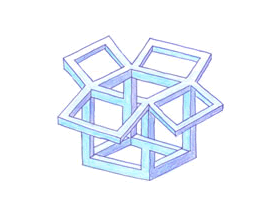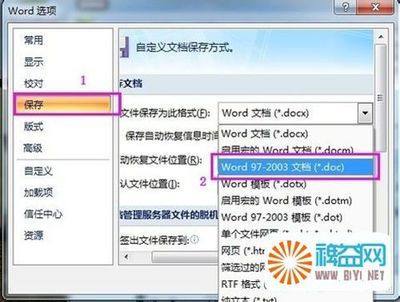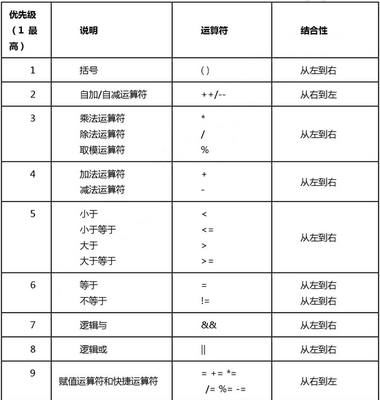自己写的实体类没有写类型转换的虚函数,为了方便所以找了一下c++的类型转换函数用了一下顺便贴出来。
/////一下引用自别人空间
介绍
大多程序员在学C++前都学过C,并且习惯于C风格(类型)转换。当写C++(程序)时,有时候我们在使用static_cast<>和reinterpret_cast<>时可能会有点模糊。在本文中,我将说明static_cast<>实际上做了什么,并且指出一些将会导致错误的情况。
泛型(Generic Types)
float f = 12.3;简而言之,static_cast<>将尝试转换,举例来说,如float-到-integer,而reinterpret_cast<>简单改变编译器的意图重新考虑那个对象作为另一类型。
float* pf = &f;
// static cast
// 成功编译, n = 12
int n = static_cast(f);
// 错误,指向的类型是无关的(译注:即指针变量pf是float类型,现在要被转换为int类型) //int* pn = static_cast(pf);
//成功编译
void* pv = static_cast(pf);
//成功编译, 但是 *pn2是无意义的内存(rubbish)
int* pn2 = static_cast(pv);
// reinterpret_cast
//错误,编译器知道你应该调用static_cast
//int i = reinterpret_cast(f);
//成功编译, 但是 *pn 实际上是无意义的内存,和 *pn2一样
int* pi = reinterpret_cast(pf);
指针类型(Pointer Types)
指针转换有点复杂,我们将在本文的剩余部分使用下面的类:
class CBaseX情况1:两个无关的类之间的转换
{
public:
int x;
CBaseX() { x = 10; }
void foo() { printf("CBaseX::foo() x=%dn", x); }
};
class CBaseY
{
public:
int y;
int* py;
CBaseY() { y = 20; py = &y; }
void bar() { printf("CBaseY::bar() y=%d, *py=%dn", y, *py); }
};
class CDerived : public CBaseX, public CBaseY
{
public:
int z;
};
// Convert between CBaseX* and CBaseY*正如我们在泛型例子中所认识到的,如果你尝试转换一个对象到另一个无关的类static_cast<>将失败,而reinterpret_cast<>就总是成功“欺骗”编译器:那个对象就是那个无关类。
// CBaseX* 和 CBaseY*之间的转换
CBaseX* pX = new CBaseX();
// Error, types pointed to are unrelated
// 错误, 类型指向是无关的
// CBaseY* pY1 = static_cast(pX);
// Compile OK, but pY2 is not CBaseX
// 成功编译, 但是 pY2 不是CBaseX
CBaseY* pY2 = reinterpret_cast(pX);
// System crash!!
// 系统崩溃!!
// pY2->bar();
情况2:转换到相关的类
1. CDerived* pD = new CDerived();
2. printf("CDerived* pD = %xn", (int)pD);
3.
4. // static_cast CDerived* -> CBaseY* -> CDerived*
//成功编译,隐式static_cast 转换
5. CBaseY* pY1 = pD;
6. printf("CBaseY* pY1 = %xn", (int)pY1);
// 成功编译, 现在 pD1 = pD
7. CDerived* pD1 = static_cast(pY1);
8. printf("CDerived* pD1 = %xn", (int)pD1);
9.
10. // reinterpret_cast
// 成功编译, 但是 pY2 不是 CBaseY*
11. CBaseY* pY2 = reinterpret_cast(pD);
12. printf("CBaseY* pY2 = %xn", (int)pY2);
13.
14. // 无关的 static_cast
15. CBaseY* pY3 = new CBaseY();
16. printf("CBaseY* pY3 = %xn", (int)pY3);
// 成功编译,尽管 pY3 只是一个 "新 CBaseY()"
17. CDerived* pD3 = static_cast(pY3);
18. printf("CDerived* pD3 = %xn", (int)pD3);
---------------------- 输出 ---------------------------
CDerived* pD = 392fb8
CBaseY* pY1 = 392fbc
CDerived* pD1 = 392fb8
CBaseY* pY2 = 392fb8
CBaseY* pY3 = 390ff0
CDerived* pD3 = 390fec
注意:在将CDerived*用隐式static_cast<>转换到CBaseY*(第5行)时,结果是(指向)CDerived*(的指针向后)偏移了4(个字节)(译注:4为int类型在内存中所占字节数)。为了知道static_cast<>实际如何,我们不得不要来看一下CDerived的内存布局。
CDerived的内存布局(Memory Layout)
如图所示,CDerived的内存布局包括两个对象,CBaseX 和 CBaseY,编译器也知道这一点。因此,当你将CDerived*转换到CBaseY*时,它给指针添加4个字节,同时当你将CBaseY*转换到CDerived*时,它给指针减去4。然而,甚至它即便不是一个CDerived你也可以这样做。
当然,这个问题只在如果你做了多继承时发生。在你将CDerived转换 到CBaseX时static_cast<> 和reinterpret_cast<>是没有区别的。
情况3:void*之间的向前和向后转换
因为任何指针可以被转换到void*,而void*可以被向后转换到任何指针(对于static_cast<>和reinterpret_cast<>转换都可以这样做),如果没有小心处理的话错误可能发生。
CDerived* pD = new CDerived();
printf("CDerived* pD = %xn", (int)pD);
CBaseY* pY = pD; // 成功编译, pY = pD + 4
printf("CBaseY* pY = %xn", (int)pY);
void* pV1 = pY; //成功编译, pV1 = pY
printf("void* pV1 = %xn", (int)pV1);
// pD2 = pY, 但是我们预期 pD2 = pY - 4
CDerived* pD2 = static_cast(pV1);
printf("CDerived* pD2 = %xn", (int)pD2);
// 系统崩溃
// pD2->bar();
---------------------- 输出 ---------------------------
CDerived* pD = 392fb8
CBaseY* pY = 392fbc
void* pV1 = 392fbc
CDerived* pD2 = 392fbc
一旦我们已经转换指针为void*,我们就不能轻易将其转换回原类。在上面的例子中,从一个void*返回CDerived*的唯一方法是将其转换为CBaseY*然后再转换为CDerived*。
但是如果我们不能确定它是CBaseY* 还是CDerived*,这时我们不得不用dynamic_cast<>或typeid[2]。
四种转换的大概解释如下:(引用自论坛)
dynamic_cast用于多态类型间的转换。包括继承类间的转换和兄弟类间的转换。
static_cast用于非多态类型的转换。既不具有继承关系的类型间的转换。
const_cast用于移除const,volatile限定符.
reinterpret_cast用于任意的位到位的转换.
操作符修改了操作数类型,但仅仅是重新解释了给出的对象的比特模型而没有进行二进制转换。
例如:int *n= new int ;
double *d=reinterpret_cast<double*>(n);
在进行计算以后, d 包含无用值. 这是因为 reinterpret_cast 仅仅是复制 n 的比特位到 d,没有进行必要的分析。
因此, 需要谨慎使用 reinterpret_cast.
并且:reinterpret_cast 只能在指针之间转换。
== ===========================================
== static_cast .vs. reinterpret_cast
== ================================================
reinterpret_cast是为了映射到一个完全不同类型的意思,这个关键词在我们需要把类型映射回原有类型时用到它。我们映射到的类型仅仅是为了故弄玄虚和其他目的,这是所有映射中最危险的。(这句话是C++编程思想中的原话)
static_cast 和 reinterpret_cast 操作符修改了操作数类型。它们不是互逆的; static_cast在编译时使用类型信息执行转换,在转换执行必要的检测(诸如指针越界计算, 类型检查).其操作数相对是安全的。另一方面;reinterpret_cast 仅仅是重新解释了给出的对象的比特模型而没有进行二进制转换,例子如下:
int n=9; double d=static_cast < double> (n);
上面的例子中, 我们将一个变量从 int 转换到 double。 这些类型的二进制表达式是不同的。 要将整数 9 转换到双精度整数 9,static_cast 需要正确地为双精度整数 d 补足比特位。其结果为 9.0。而reinterpret_cast的行为却不同:
int n=9;
double d=reinterpret_cast<double &> (n);
这次, 结果有所不同. 在进行计算以后, d 包含无用值. 这是因为 reinterpret_cast 仅仅是复制 n 的比特位到d, 没有进行必要的分析.
因此, 你需要谨慎使用 reinterpret_cast.
 爱华网
爱华网




